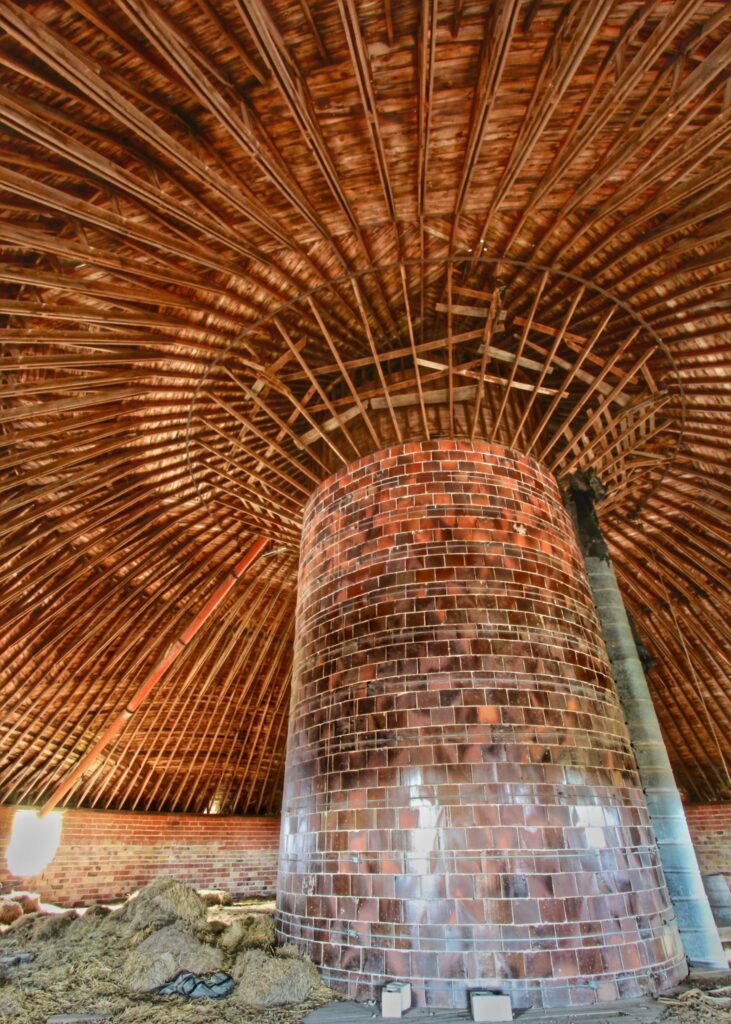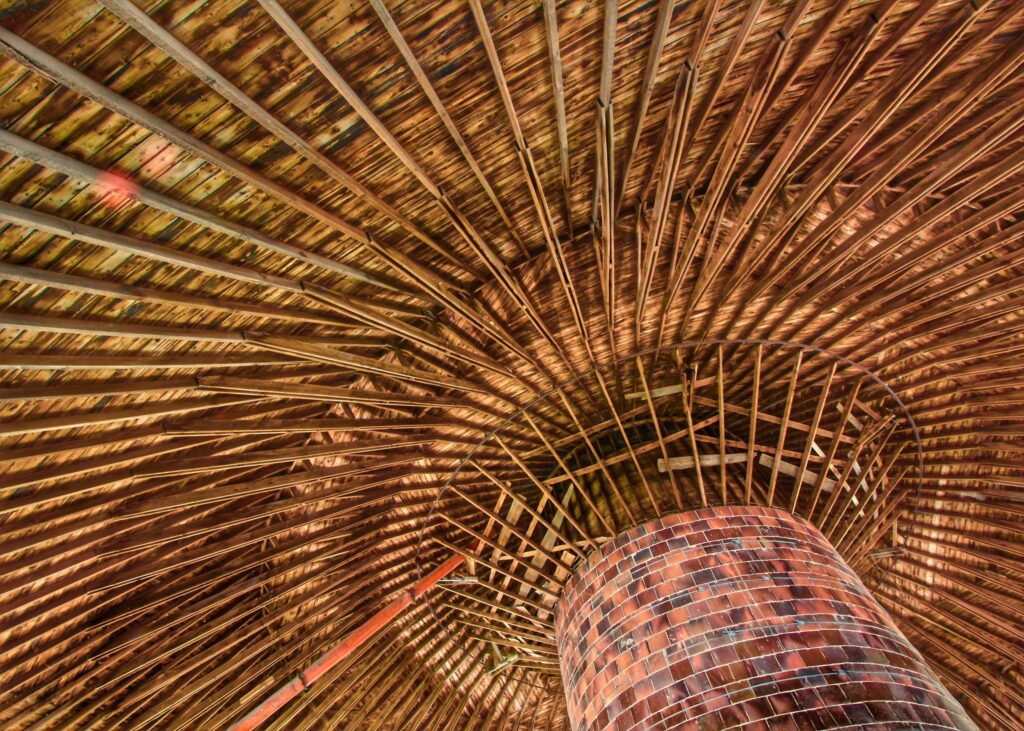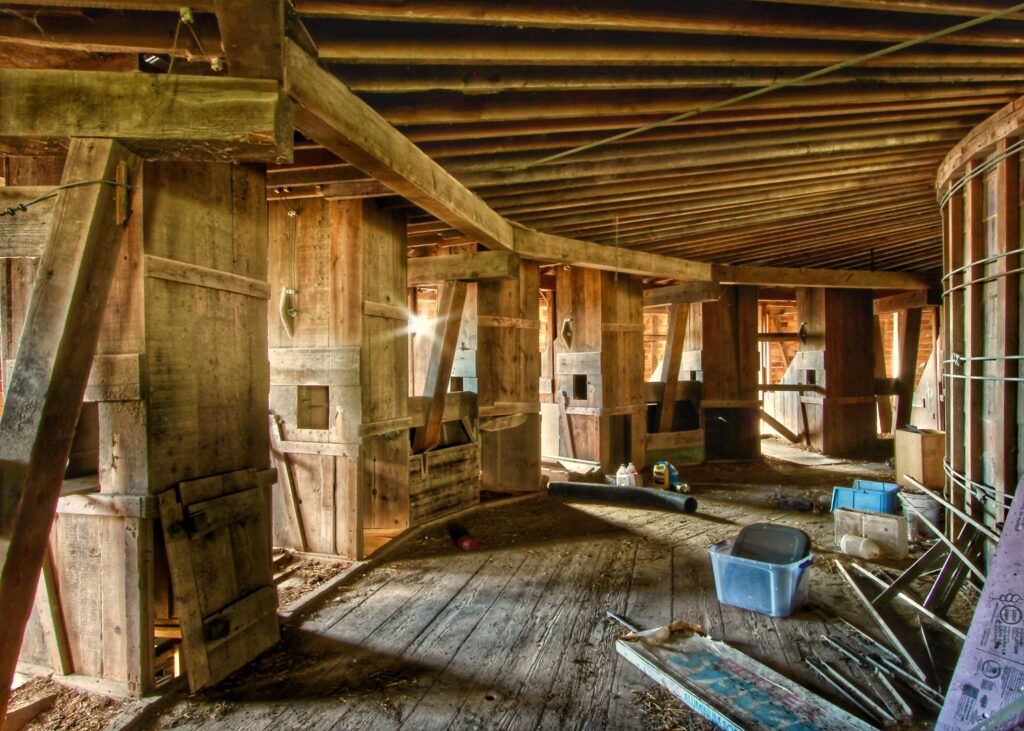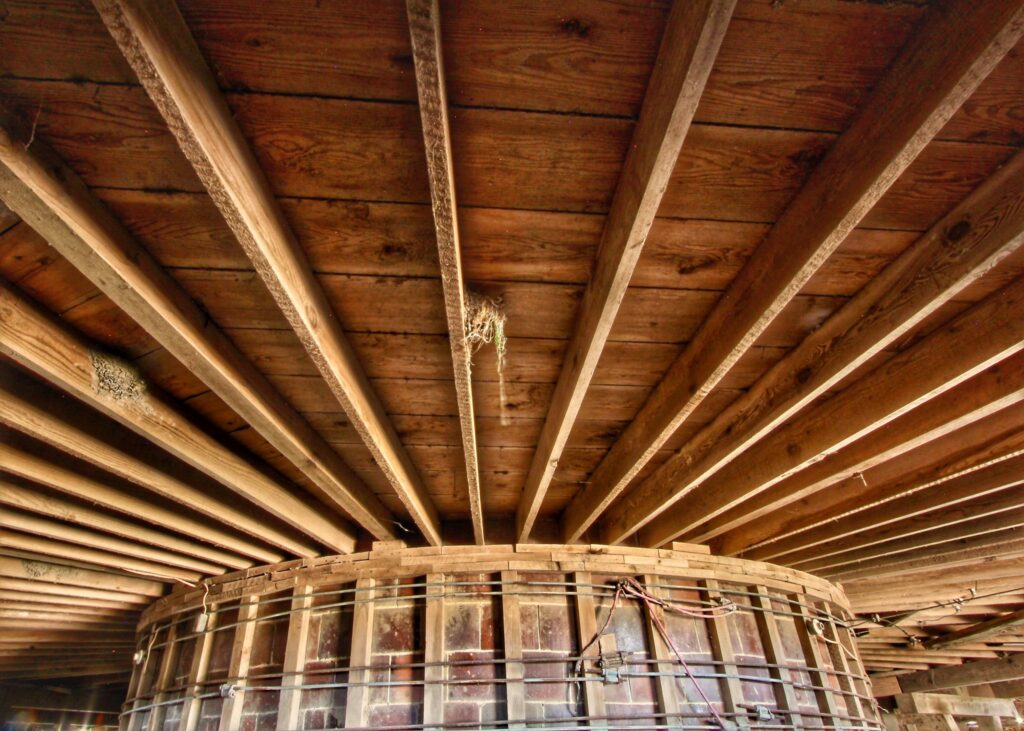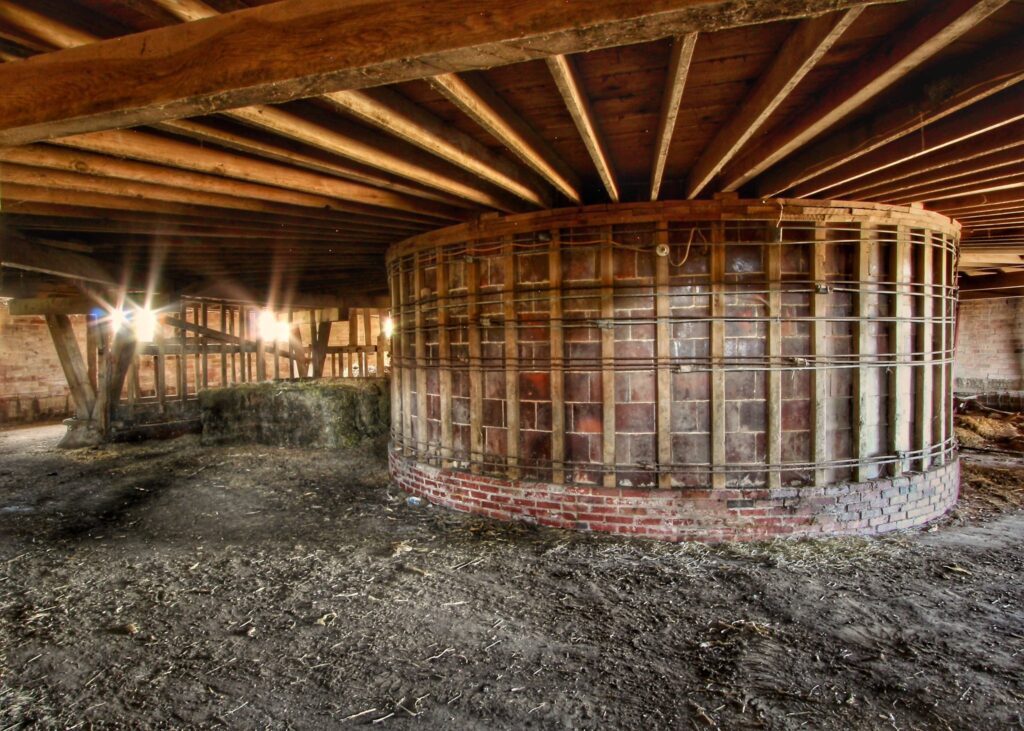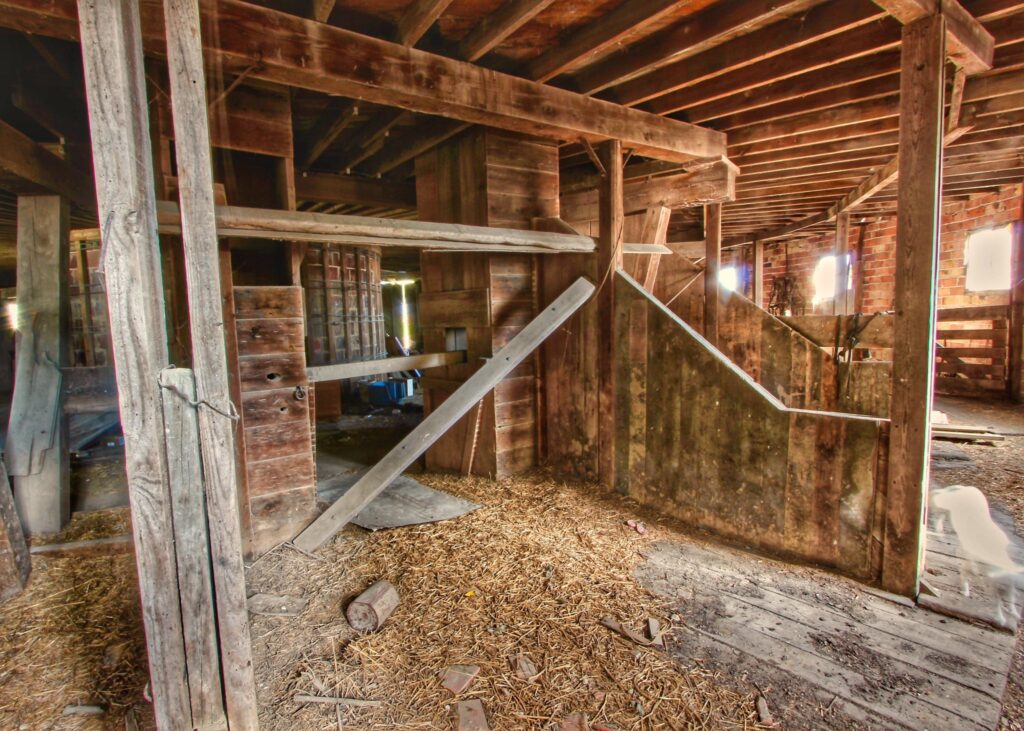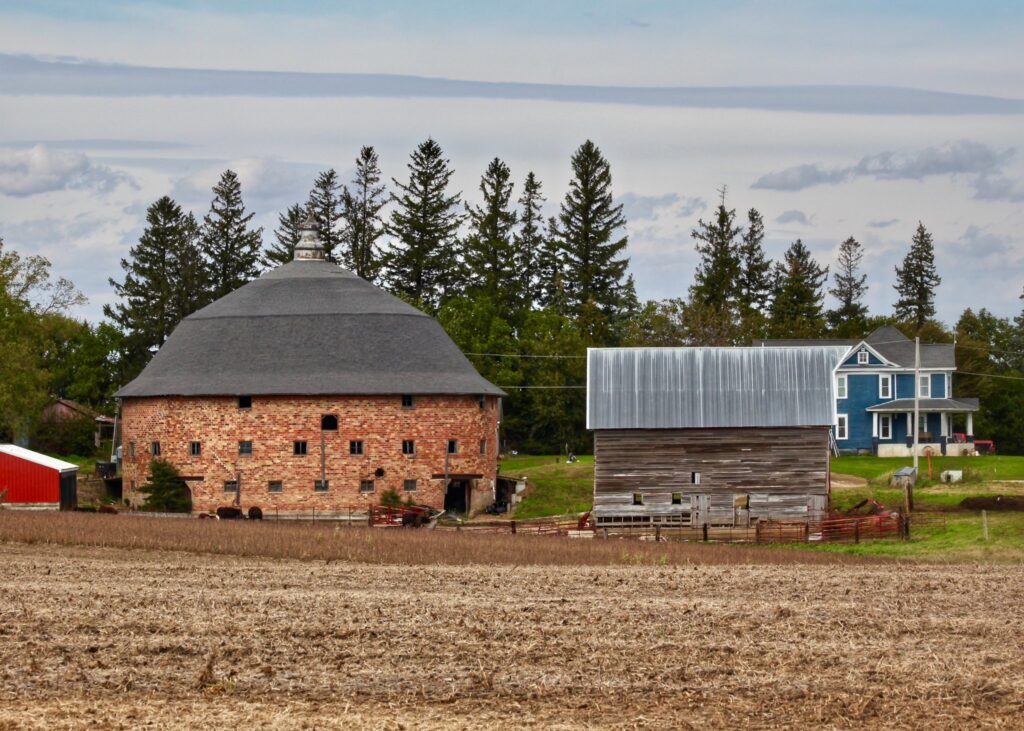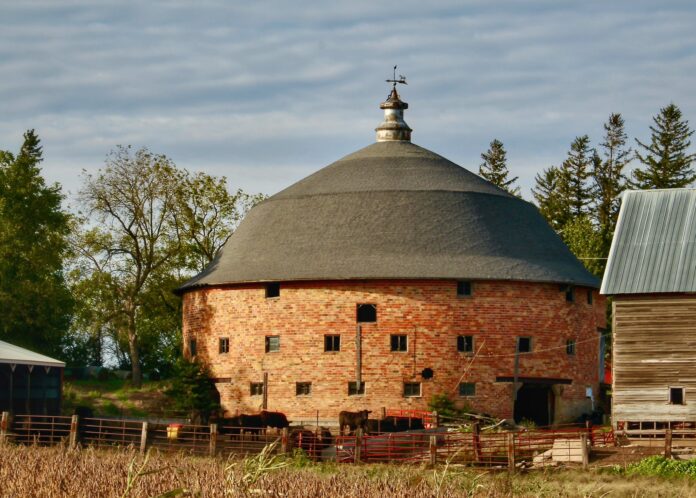Standing proudly in Iowa County, Iowa, the 1912 Plagmann Round Barn is nothing short of extraordinary. Measuring an impressive 85 feet in diameter, it holds the title of the largest clay tile round barn in the world—and the largest round barn in the entire state of Iowa.
This barn is remarkable for several reasons:
- Sheer Size – Its massive dimensions make it an architectural marvel.
- Expert Craftsmanship – Inside, the structural details are a work of art.
- Historical Innovation – It represents decades of improvements in round barn construction.
- Remarkable Survival – Thanks to devoted caretakers who have poured time, money, and love into its upkeep, this historic structure still stands strong today.
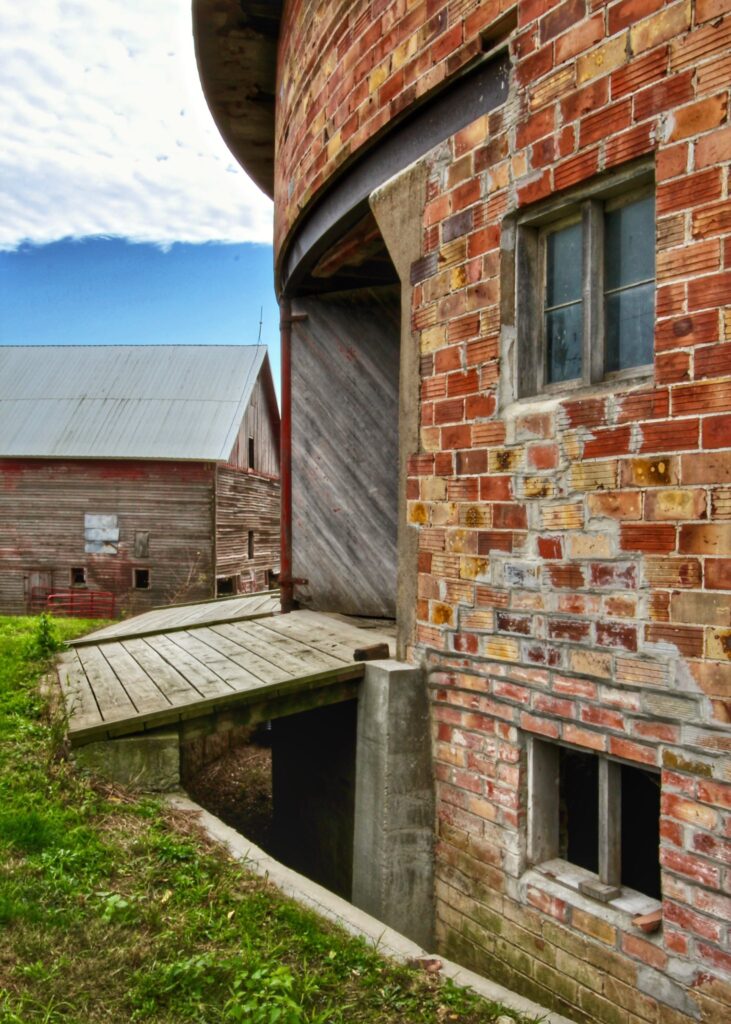
A Barn Built for Efficiency
The barn was constructed for Gustave Plagmann, a forward-thinking livestock farmer, to house and feed cattle. Its enormous hay mow could store over 200 tons of hay, which could be dropped to lower levels via seven chutes.
At the heart of the barn rises a 20-foot-diameter clay tile silo that towers 45 feet high, anchoring the entire structure. The middle level served as a workspace with horse stalls circling the silo—home to 30 horses, including large Belgian draft horses (honored on the barn’s weather vane). Each stall featured a trap door for manure disposal to the lower level.
The lower level offered an open space around the silo where cattle could gather and feed from hay bunks. Massive timbers form V-shaped supports that run through both levels, a testament to the barn’s engineering strength.
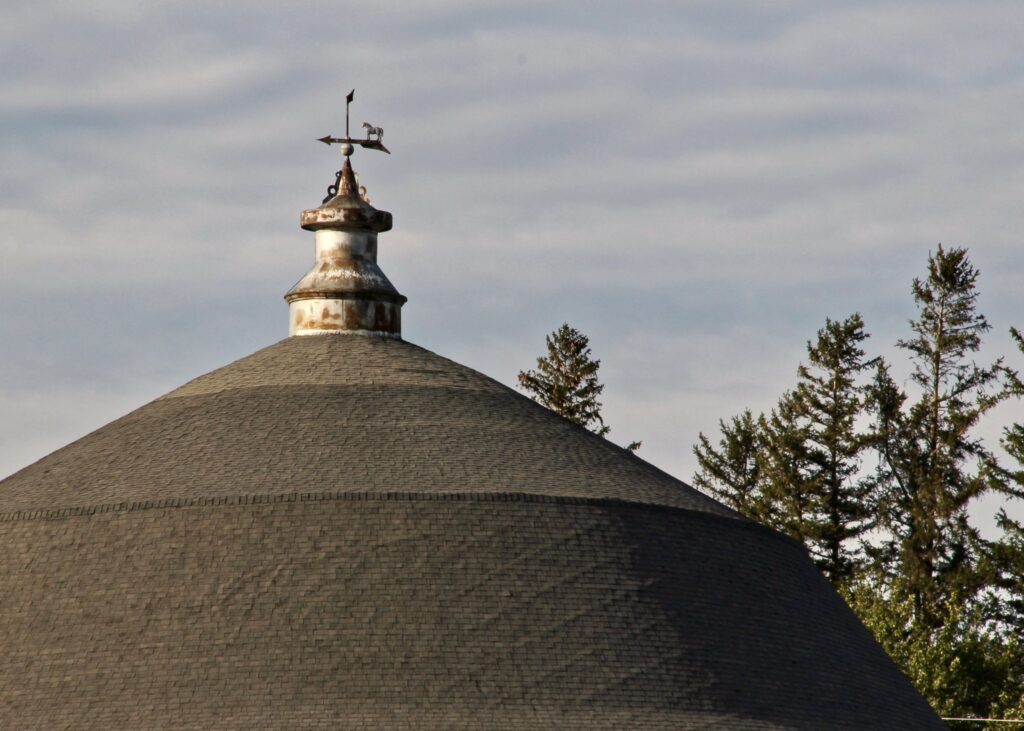
The Farmer Behind the Barn
In his 1915 History of Iowa County, Iowa, and Its People, author James Dinwiddie described Plagmann as “an excellent representative of the new type of farmer” who embraced scientific farming methods to improve efficiency and productivity.
This spirit of innovation was fueled by landmark agricultural legislation:
- Morrill Act (1862) – Established land-grant colleges across the U.S.
- Hatch Act (1887) – Created agricultural experiment stations in each state to research cost-effective, efficient farming practices.
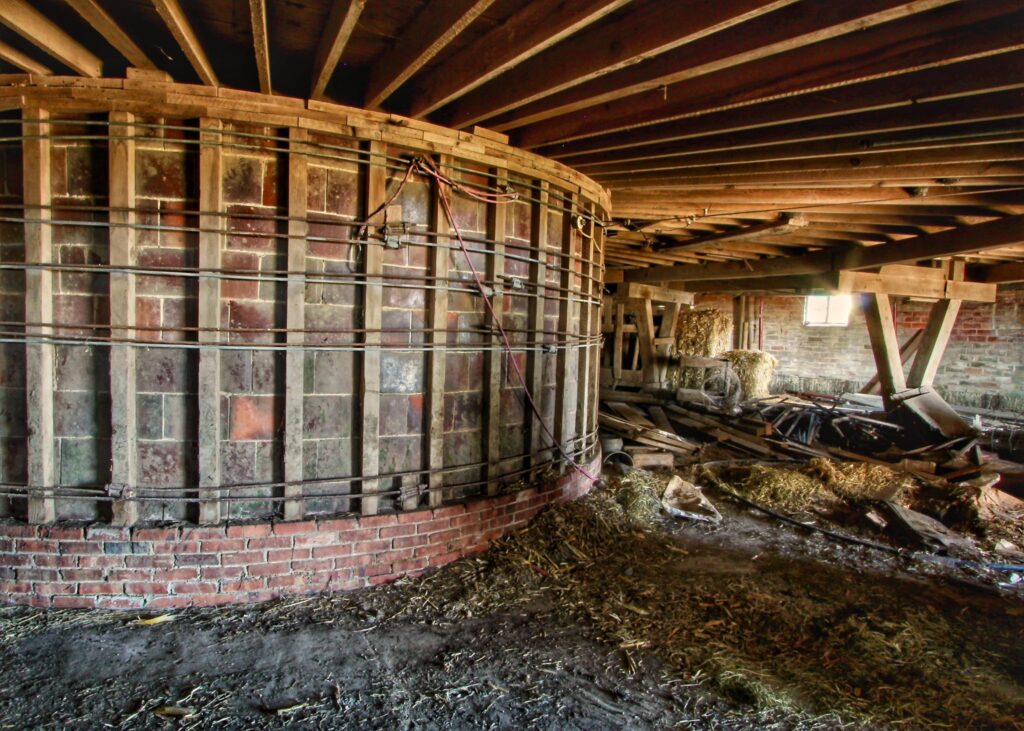
How Science Shaped the Round Bar
Experiment stations nationwide helped refine round barn design:
- University of Wisconsin – Professor Franklin King perfected the wooden circular silo, placing it in the barn’s center to save farmers time and labor.
- Indiana Builders (1905) – Developed self-supporting gambrel roofs, increasing hay mow capacity.
- University of Illinois (1908) – Added more windows for better natural lighting.
- Iowa Experiment Station (1910) – Pioneered vitrified clay tile construction for barn and silo walls.
The Plagmann Round Barn combined all these innovations into one groundbreaking 1912 design.
A Story of Survival
Over the past 25 years, the barn has undergone extensive maintenance to preserve its legacy. It bears a few battle scars—most notably, a collapsed outside silo that once crashed into its side, leaving visible patchwork in the clay tiles.
Despite these challenges, the Plagmann Round Barn remains a symbol of resilience, standing as both a historic landmark and a testament to the ingenuity of early 20th-century American farming.
